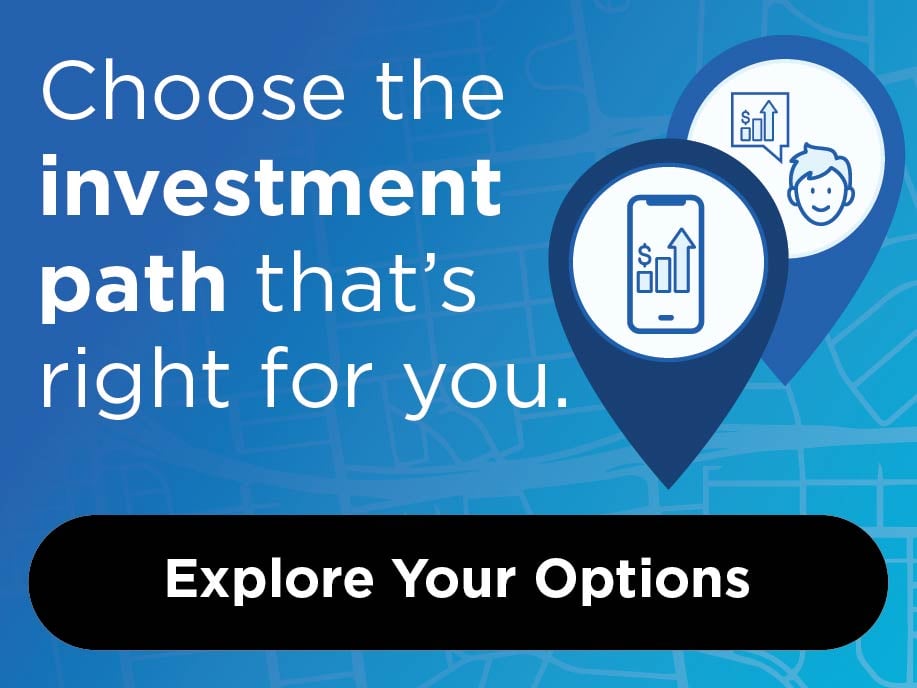
- The power of compounding helps your savings or investments grow exponentially over time to help you live the life you want.
- Interest can compound your money in savings accounts, CDs, etc. while earnings and dividends do the work in investments such as stocks, bonds, mutual funds, etc.
- Investing just $167 a month ($2,000 a year) in your 20s has the potential to turn into more than $500,000 or more near retirement age of 67 because of compounded earnings and dividends that are re-invested.
The task of saving and growing your money for multiple goals can seem daunting. A typical financial journey can include the challenges of saving or paying for a car, a home, a college education and retirement, all the while paying for household family expenses such as groceries, clothes, utilities and insurance.
Regardless of how much you are able to save each month or each year, you have two powerful tools with the exponential ability to help – compounding and time.
Let Your Money Work for You
Compounding helps you make more money on the money you save or invest. High-yield savings accounts, certificates of deposit (CDs) and money market accounts can provide you compound interest, generally with lower risk. Investments in stocks, bonds, mutual funds, etc. provide compounded earnings and dividends, with risk associated with the specific investments you choose as well as economic factors.
Here’s an illustration of the difference between simple interest and compound interest in a savings account, assuming you put $10,000 into the account this year at 5% interest. Simple interest grows your money by $500 a year (5% of $10,000). Compound interest (annually) allows you to make money on your original savings of $10,000 plus the accumulated interest you’ve earned to date.
| After Year | Simple Interest | Compound Interest |
| 1 | $10,500 | $10,500 |
| 5 | $12,500 | $12,762 |
| 10 | $15,000 | $16,288 |
| 20 | $20,000 | $26,532 |
The more time you allow the money to compound upon itself, the bigger the difference in growth when you compare simple interest and compound interest. This example also doesn’t account for the ability to add to your savings on a regular basis, which would have even more exponential impact.
Compounded Investments Help Achieve Long-Term Goals
To underscore the point even more, let’s look at an example of how compounded earnings and dividends can help your money grow for a longer-term goal such as retirement. Let’s say you invest just $167 a month which comes to $2,004 a year into an Individual Retirement Account (IRA) that is invested in a diversified portfolio of stocks, bonds and mutual funds. Let’s project an average annual return of 7% (according to U.S News, the S&P's annualized average return for the past 30 years is 7.9%)1. Keep in mind that unlike savings instruments, the returns are not guaranteed and can fluctuate up or down year-over-year.
| After Year | Total Invested to Date | 7% Annual Return with Reinvested Earnings and Dividends |
| 1 | $2,004 | $2,069 |
| 5 | $10,020 | $11,956 |
| 10 | $20,040 | $28,905 |
| 20 | $40,080 | $86,944 |
| 30 | $60,120 | $203,735 |
| 40 | $80,160 | $438,343 |
| 50 | $100,200 | $909,827 |
This illustration assumes no withdrawals from this investment so everything that has been invested up to each date is fully impacted by the power of compounding. It also assumes that you don’t invest more than just the $167 a month or $2,004 a year. However, as most people increase their income over time, they are able to invest more, further capitalizing on the power of compounding.
Even smaller investments make big goals achievable because of the power of compounding and time. If a 27-year-old started investing just $167 a month, it’s possible to grow it to $438,343 by full retirement age of approximately 67.
Taking small steps and letting compounding and time do most of the work can lead to achieving the seemingly unachievable. Contact a Wealth Management by CommunityAmerica Wealth Advisor to learn more.




